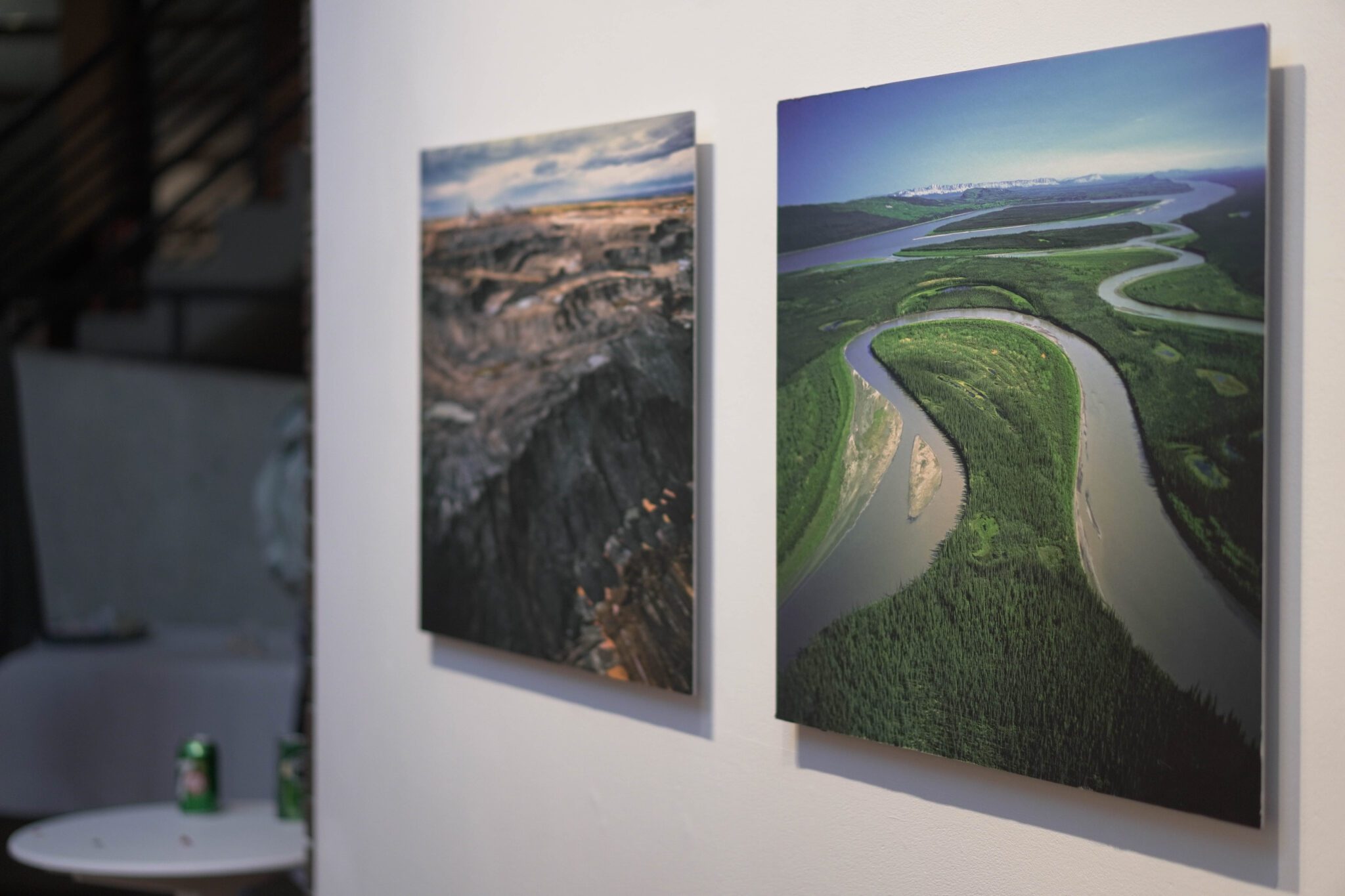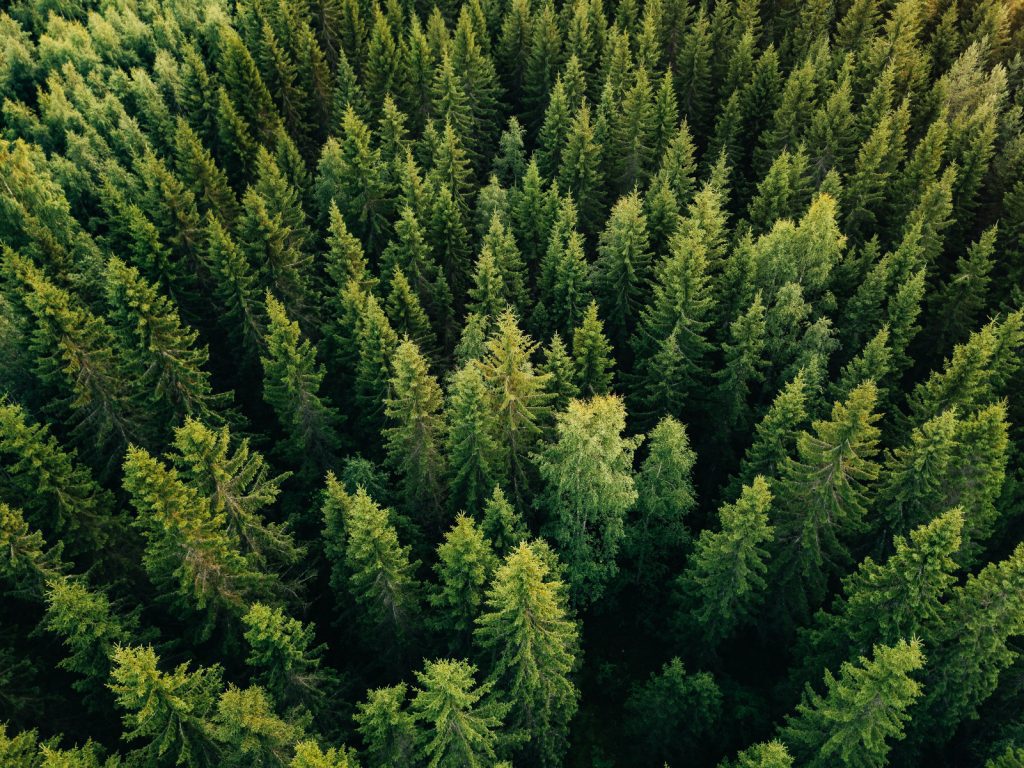The True Cost of Oil photography exhibit, presented by Environmental Defence and Keepers of the Water, took place from May 15th to June 1st. Here, Colleen shares her Impressions of the exhibit launch on May 16th.
It poured in Edmonton, the day Garth Lenz’s The True Cost of Oil photography exhibit launched on May 16, at the University of Alberta’s Fine Arts Building (FAB) Gallery. Each time I shook out my umbrella, people remarked “we really need this rain.”
Just a few days before, emergency air quality warnings due to wildfire smoke flashed across the top of FAB’s webpage. That day though, the smoke cleared.
Jean L’Hommecourt, co-chair of Keepers of the Water, arrived early, even though she made the more than five hour journey all the way from Fort McKay First Nation on Treaty 8 territory, where wildfires had forced nearby evacuations.
Together, we watched the life-sized projection of photos by Tori Cress from G’Chimnissing in Williams Treaty Territory (communications manager for Keepers of the Water) from communities living downstream of the tar sands play out on the gallery wall. Jean smiled and commented as the reel showed a crow on a truck top, salmon preparation, elders at a community meeting, a hand game competition.
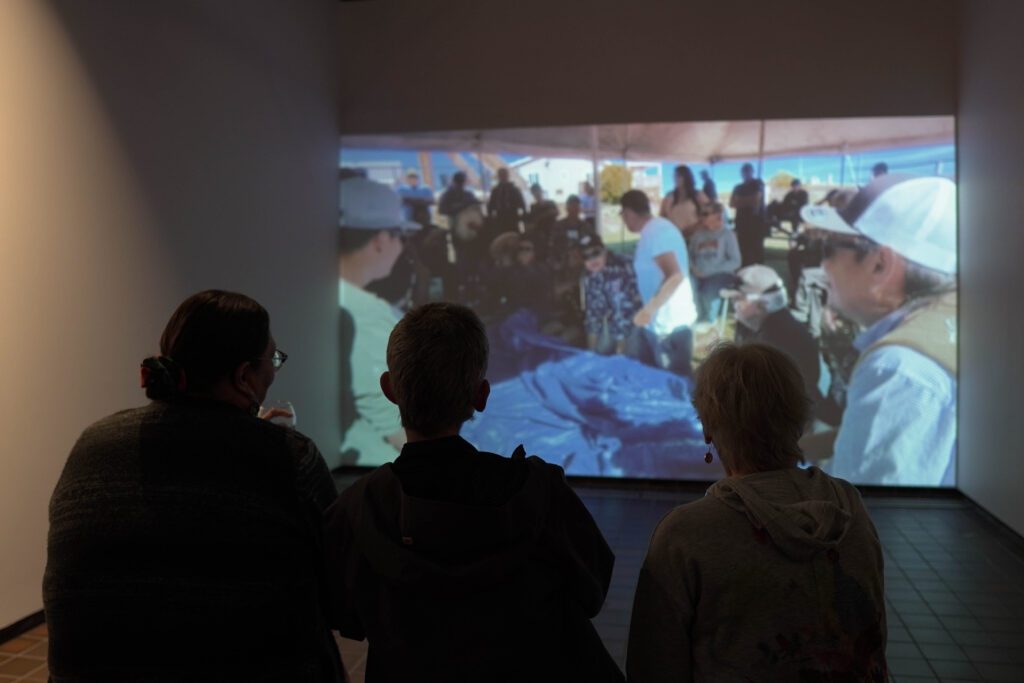
She explained during the panel discussion later that tar sands operations impact these Indigenous Nations’ ability to collect medicines, have social gatherings, consume traditional foods and maintain their close relationship with the land.
As more people arrived, we made the journey up a flight of stairs, past the landing decorated with sculptures, to the room where students, environmentalists, and community members were gathered.
The Oil Sands and the Last Great Forest
There Garth Lenz, renowned editorial and fine art photographer, stood in front of his photograph of tailings waste water that reflected pure white clouds – and if you look closer, contains a swirl of toxic bitumen. He talked about the inner friction associated with fossil fuels, saying, “our cities have become kinds of temples to fossil fuel consumption…The more oil we have to use, the more we use it, the more we need it, and we get this very lamentable kind of positive feedback situation.”
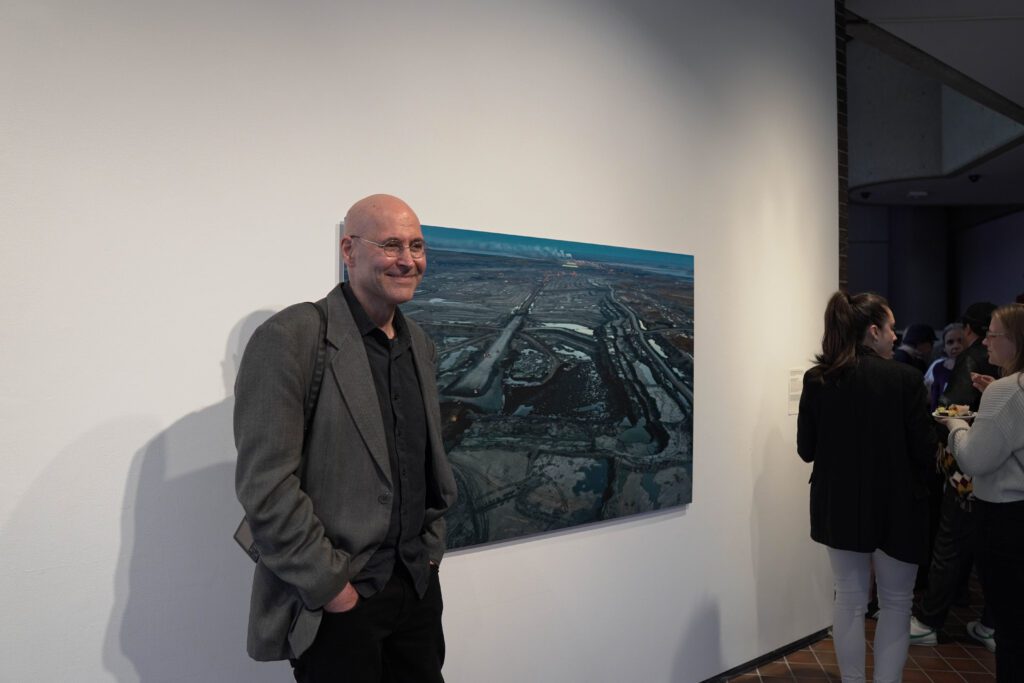
When he flies in helicopters to shoot images of the Boreal Forest region, he shared that “there’s this kind of adrenaline thrill because you realize at the time that you’re hopefully making a powerful and meaningful image. But then when you actually look at it, especially when you’re looking at hundreds of them, then it kind of sinks in, what we’re really doing to the planet.”
Treaty 8 Territory
As the panel continued we learned more about the impacts of fossil fuel production that Garth saw from the air and how they are unequally distributed.
Jean shared that Fort McKay First Nation’s “land base is so small and so close to the vicinity of …industrial wastelands that are in our backyards. We hear it 24/7. We smell it. We taste it and we feel it in our bodies. We are affected every which way….”
Yet, as Cleo Reece, a member of Fort McMurray First Nation (Keepers of the Water Elders Wisdom Council ), explained, First Nations Peoples never did “cede or surrender the lands.” In fact, Jean added, the English words cede and surrender were not translatable into their language.
When asked what justice would look like, Jean expressed the need for more than empty land acknowledgments, saying, “the only justice is our land back…They’ve come here and taken our lands and done all this destruction. Acknowledge that. Justify that. We’re still waiting and we’re still here.”
She also explained that Treaty 8 gives “the right to hunt, fish and gather but then there’s more to it than just that. There’s also the spiritual aspect and how we consider our treaty to be our lifeline in protecting our rights, our inherent rights. This is our stronghold and it’s probably our only way to fight this battle.”
Work and Life
Oil and gas projects, like pipelines, can also create divisions in communities due to the tradeoff between short term benefits and long term impacts. An audience member asked if Cleo and Jean had any advice about that.
Cleo joked, “you’ve got the oil sands up there and then you’ve got the oilers, and you’ve got the oil kings and you have the oil barons….did you ever see those stickers, ‘I Heart Oil’?”
Growing serious, she explained how in an example of environmental racism, oil and gas jobs are often the only ones available to her community, and that they are well-paying and can offer training.
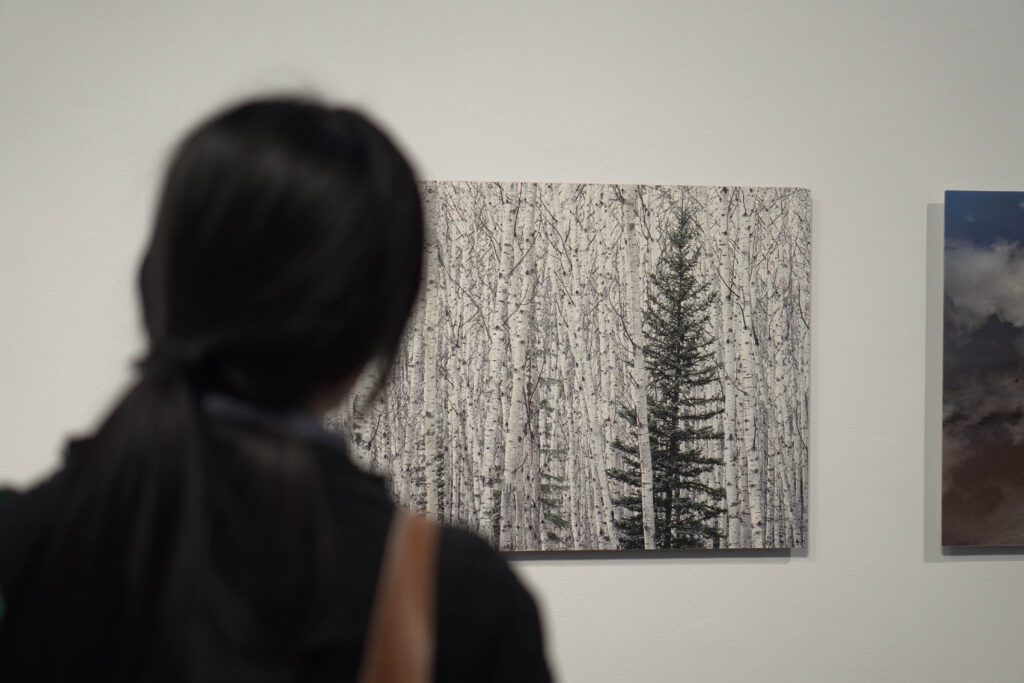
Jean added, “I have family members that worked in the oil sands. I’ve never worked for the oil industry or anything of that sort…I don’t want to have my family rely on oil for their way of life because when that’s gone, then what’re you gonna’ have. “
For Cleo, foresight is also key to a healthier, more just world. She said that “the elders, people who are concerned about the land, water and so on, they’re thinking ahead, they’re thinking of their grandchildren and their great grandchildren… what are we leaving for them?”
What’s in it for Everyone?
Back in the gallery, we continued the conversation. Light slanted in as the long Edmonton day neared sunset. It cast leaf-shapes over the wall, and onto Garth’s images of vast tar sands mines and pools of tailings water.
The images underscored that until communities aren’t forced to choose between a clean environment and good jobs, until Indigenous rights are upheld, until thinking generations ahead is prioritized, the tar sands industry will continue to jeopardize the lands, air and water.
Earlier in the day I’d heard someone say “what’s in it for us?” What’s in it for us if society changes to sustain ways of life in harmony with the environment, like that led by Indigenous communities for millennia? What’s in it for us if life itself is prioritized over profits?
What’s in it for us – everything.
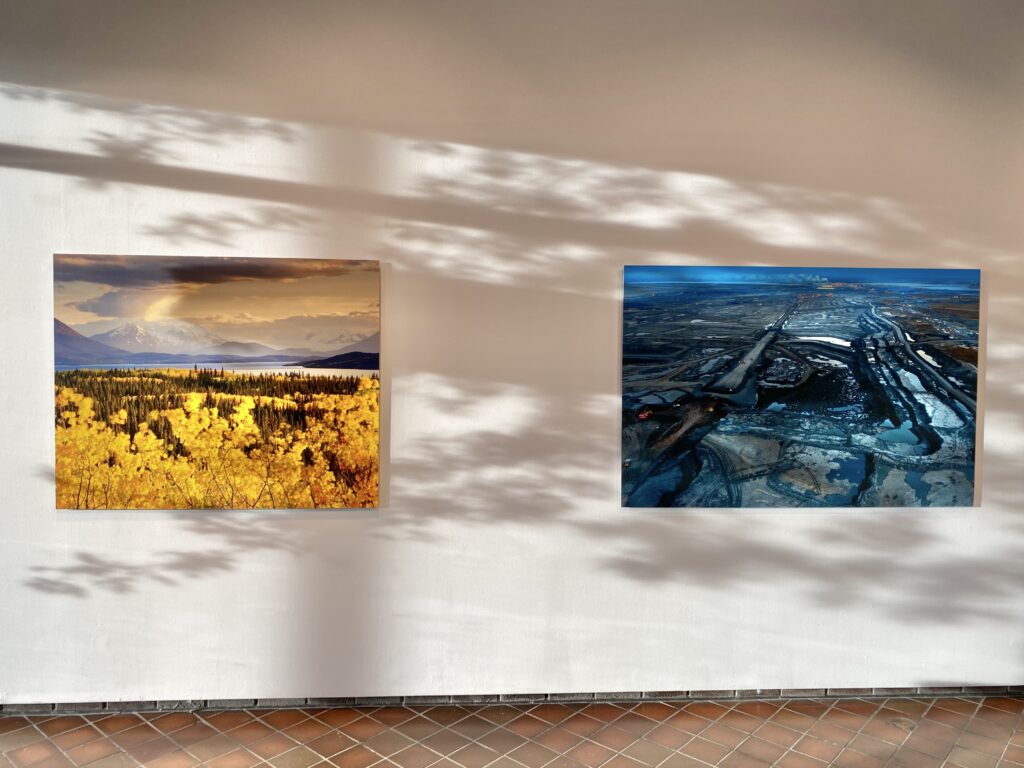
As I envisioned what a healthier approach for Alberta, and for all of us, could look like, the sun also dappled Garth’s images of the Boreal Forest, the snaking waterways, the green peatlands. And there, surrounded by other guests, talking about how we could stay connected and work together for change, I felt just a little more hope.
Want to help hold tar sands companies accountable? Take Action




